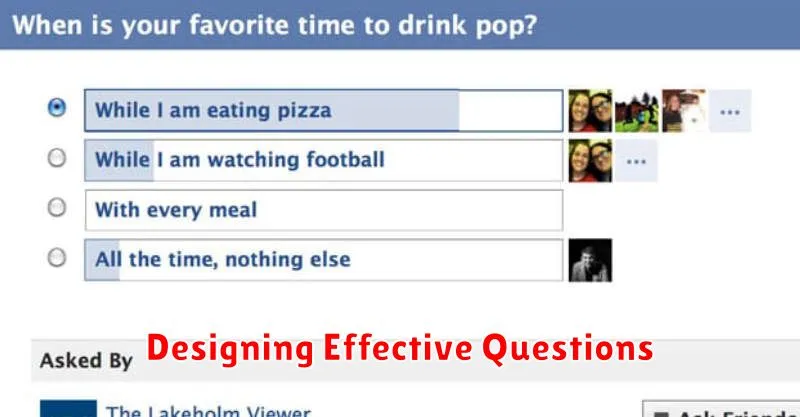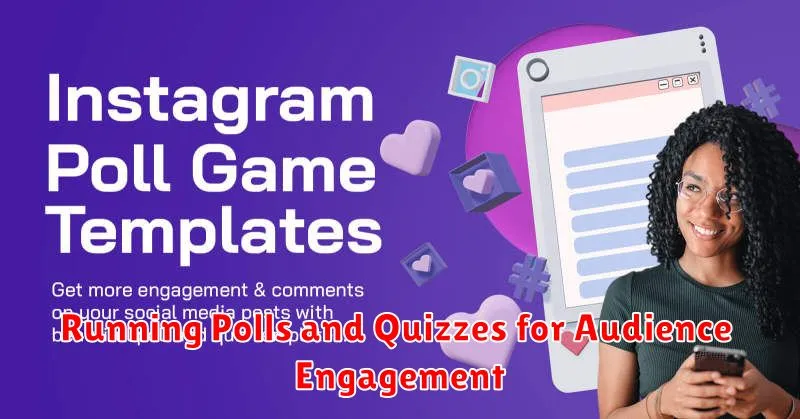Engaging your audience is crucial for any successful presentation, workshop, or online event. Polls and quizzes offer powerful tools to transform passive listeners into active participants, fostering a dynamic and interactive environment. Learn how to effectively use polls and quizzes to boost audience engagement, gather valuable feedback, and enhance learning outcomes. This article will delve into the best practices for crafting compelling polls and quizzes, maximizing their impact on your audience engagement strategy.
From understanding the different types of polls and quizzes to implementing them seamlessly into your presentations, this guide provides practical strategies for maximizing their effectiveness. Discover how to leverage these interactive tools to capture your audience’s attention, assess their understanding, and stimulate meaningful discussions. Unlock the potential of polls and quizzes to elevate audience engagement and create truly memorable experiences.
Why Use Interactive Content?
Interactive content, such as polls and quizzes, offers significant advantages over static content in capturing audience attention and fostering engagement. It transforms passive viewers into active participants, creating a more immersive and memorable experience.
Increased Engagement: Polls and quizzes inherently encourage interaction. Asking a question directly prompts a response, drawing the audience into the content and making them feel involved. This active participation leads to higher levels of engagement compared to simply consuming information passively.
Enhanced Information Retention: When audiences actively participate, they are more likely to retain the information presented. Answering questions, even simple ones, reinforces key concepts and creates a more memorable learning experience.
Valuable Data Collection: Interactive content provides valuable insights into audience preferences, opinions, and knowledge gaps. This data can be used to tailor future content, improve marketing strategies, and better understand your target audience’s needs.
Boosting Brand Awareness and Reach: Engaging polls and quizzes are often shared on social media, extending your reach beyond your immediate audience. This can significantly increase brand visibility and drive new traffic to your platforms.
Best Platforms for Polls and Quizzes
Choosing the right platform is crucial for seamlessly integrating polls and quizzes into your engagement strategy. The ideal platform depends on your specific needs, audience, and budget. Here are some popular options:
Social Media Platforms
Platforms like Twitter, Instagram, and Facebook offer built-in polling features, making them convenient for quick audience interaction. These are ideal for simple polls and reaching a broad audience. However, they may lack advanced features like data analysis and customization.
Dedicated Polling and Quiz Platforms
Several dedicated platforms like SurveyMonkey, Quizizz, and Poll Everywhere provide robust features including advanced question types, detailed analytics, and branding options. These platforms are best suited for complex quizzes, data collection, and professional use.
Website Integration Tools
Tools like Riddle and Typeform allow seamless integration of polls and quizzes directly into your website. This provides a more immersive experience and can help gather valuable user data.
Presentation Software
Platforms like Mentimeter and Slido are designed for interactive presentations and offer live polling and Q&A features. These are best for engaging audiences during presentations, workshops, and meetings.
Consider factors like ease of use, audience reach, customization options, and analytics capabilities when selecting a platform.
Designing Effective Questions

Clarity is paramount when designing effective questions for polls and quizzes. Ambiguous wording can lead to misinterpretations and inaccurate data. Keep questions concise and focused on a single point. Avoid jargon or technical terms your audience may not understand.
Consider your objective. What are you trying to learn from this poll or quiz? Tailor your questions to elicit the specific information you need. For example, if you’re gauging product satisfaction, ask direct questions about features and usability.
Question types matter. Choose the appropriate format for each question. Multiple-choice questions are useful for gathering quantifiable data, while open-ended questions allow for richer, more nuanced feedback. Rating scales provide a spectrum of options for expressing opinions.
Keep it brief. Respect your audience’s time by keeping the poll or quiz concise. Long, complex questions can lead to respondent fatigue and drop-off rates. Aim for a manageable number of questions that can be answered quickly.
Test your questions. Before launching your poll or quiz, pilot test your questions with a small group to identify any potential issues with clarity or formatting. This allows you to refine your questions for optimal effectiveness.
Driving Engagement and Shares
Maximizing the reach of your polls and quizzes involves strategic promotion and encouragement of sharing. Incentivizing participation can significantly boost engagement. Consider offering small rewards, like a discount code or entry into a raffle, for completing the interactive content.
Leverage social media platforms to promote your polls and quizzes. Announce them in advance to build anticipation. Share the results and highlight interesting findings to encourage further discussion and resharing. Use relevant hashtags to increase visibility.
Make sharing easy. Include prominent social media sharing buttons at the end of the poll or quiz. Pre-populate share messages with compelling text to make it easier for participants to spread the word.
Create a sense of community around the interactive content. Encourage participants to tag friends or share their results with their networks. Respond to comments and questions to foster a sense of connection and encourage continued engagement.
Time the release strategically. Consider your target audience’s online habits and schedule the release of your polls and quizzes when they are most likely to be active.
Collecting Insights from Results
Gathering data is only half the battle. Analyzing the results of your polls and quizzes is where the real value lies. This information provides actionable insights into your audience’s preferences, knowledge gaps, and overall opinions.
Look beyond simple percentages. Consider the context of the questions asked and the demographics of your audience. For example, a quiz about product features might reveal that a specific segment of your audience struggles with a particular function, highlighting an area for improvement in documentation or user experience.
Segment your audience based on their responses to glean deeper insights. This might reveal trends among specific demographics or interest groups. For example, if you’re polling about preferred content types, segmenting by age might reveal different preferences between younger and older audiences.
Track results over time to understand how opinions and knowledge evolve. Repeating similar polls or quizzes periodically can show the impact of marketing campaigns or educational initiatives. This longitudinal data provides valuable benchmarks for measuring progress.
Follow-Up Content Based on Answers
Leveraging poll and quiz results allows for the creation of highly targeted follow-up content, thereby maximizing audience engagement. By analyzing the collective responses, you can identify knowledge gaps, prevailing opinions, and areas of particular interest.
For instance, if a significant portion of your audience answers incorrectly on a quiz question about a specific feature of your product, it signals a need for more educational material. You can create targeted blog posts, tutorials, or even short videos explaining the feature in greater detail. This addresses the identified knowledge gap directly and provides valuable information to your audience.
Similarly, polls can reveal audience preferences and opinions. If a poll reveals strong interest in a particular topic, you can develop follow-up webinars, Q&A sessions, or in-depth articles catering to that specific interest. This demonstrates responsiveness to your audience’s desires and keeps them actively engaged with your content.
This data-driven approach ensures that your content remains relevant and valuable, fostering a stronger connection with your audience and encouraging continued participation.

